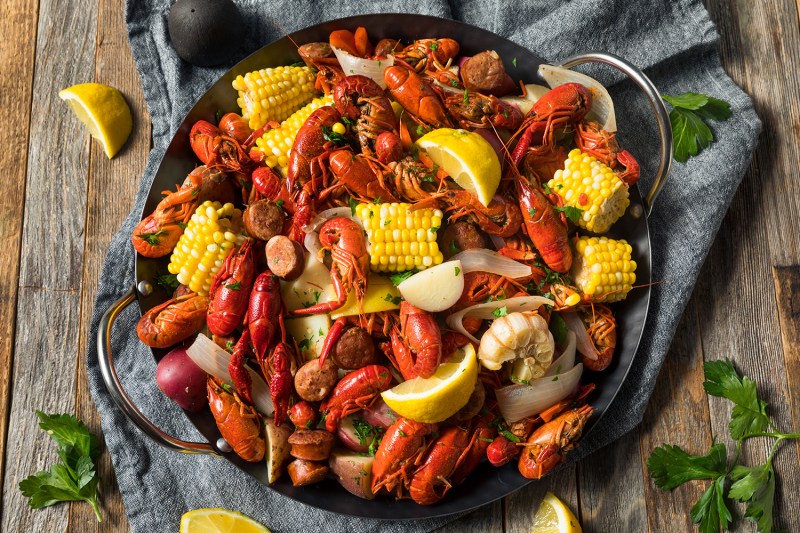
Crawfish, crayfish, crawdads, freshwater lobsters, mountain lobsters, yabbies, or mudbugs — whatever you call them, one thing remains the same: They’re delicious. That is; when they’re prepared correctly. If you live above the Mason-Dixon line, you may not have heard of any of these cousins to the lobster, and that’s totally normal. Crawfish are everywhere, but the vast majority of the world’s eating crayfish come from Louisiana (around 95%).
The end of March to early June is prime crayfish season (when they grow to be the largest). That’s why crawfish boils are common around the middle of spring to early summer. Despite being at their largest around this time, they’re still pretty small. A jumbo crayfish will provide about as much meat as an average-sized shrimp. So, after you learn how to eat crawfish, you’re going to need to eat a lot — we suggest around 3 to 5 pounds per person. This seems like a ton, but you have to remember that these little buggers are mostly shell. And the secret of a good crawfish boil is to not overcook them, or the meat becomes tough.
Besides crawdads, a classic crawfish boil contains three other main ingredients: andouille sausage, potatoes, and corn on the cob. Sometimes, people will throw in a hearty green like green beans or cabbage, but we are forgoing that in this recipe. As far as essential cooking equipment goes, you’ll need an extra large 80-quart stockpot with a boil basket. If you’re planning on cooking outside, an outdoor burner stove will come in handy.
Crawfish boil recipe
Ingredients
- 1 sack (30-35 pounds) of fresh, live crawfish
- 2 pounds of andouille sausage cut lengthwise then into 2- to 3-inch pieces
- 5 pounds of red potatoes
- 10 ears of corn on the cob, husked and cut into fourths or thirds, depending on size
- 3 heads of garlic unpeeled
- 3 large white onions sliced thick
- 4 large lemons halved
- 8 bay leaves
- 1 bunch of celery cut into 1-inch pieces
- 2 packs of your favorite crawfish boil seasoning (6 to 8 ounces)
- 1 tablespoon of liquid crab boil seasoning concentrate
- salt and pepper to taste
Method
- Clean and purge live crawfish, discarding any dead crawfish. See below for more info.
- Fill the stockpot 1/3 way with water.
- Add the garlic, bay leaves, dry and liquid crab boil seasonings, celery, lemons, and potatoes.
- Bring to a boil, then reduce heat to simmer and cook for 25 minutes.
- Stir in onions and sausage and simmer for another 20 minutes.
- Slowly add crawfish and return to a boil.
- As soon as the mixture returns to boil, drop back down to a simmer for 5 minutes or until crawfish shells are bright red — test one to see if the head is easily removed.
- If done, remove the boil basket and drain well.
- Serve in a large bowl or traditional Louisiana style — on a table covered with several layers of newspapers.
FAQs on all things crawfish
If you have questions about crawfish, we have answers. Here are the most common queries most people have about this Louisiana staple.
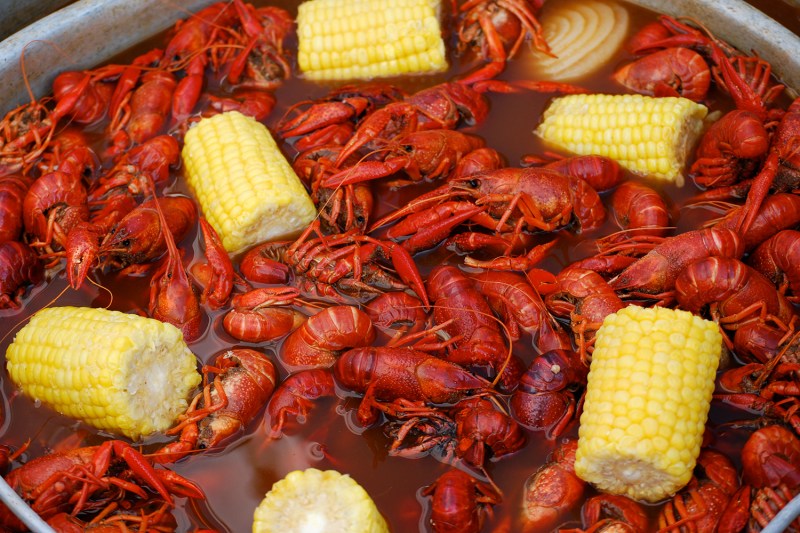
Where do you buy crawfish?
The best place to buy crawfish is at a local seafood wholesaler. If you live in a mid to large-sized city, you should be able to track down at least one. If you live in a smaller town, you may first want to check with an area food distributor to see if they can help. If not, you may need to drive to a nearby city or order online. There are a few places that will ship you live crawfish. We like the Louisiana Crawfish Co.
The important thing to look for when buying crawfish is that the majority of them are alive. It’s normal to have a handful of dead crawfish in a sack (which you’ll want to dispose of to avoid food-borne illness), but if you’ve got a large portion of dead crawfish, that’s a problem.
How do you store crawfish?
If your boil isn’t planned for the same day you buy your crawfish, that’s okay. Crayfish can be stored in a cooler, on ice, for a few days. Just make sure they don’t become submerged in water for too long.
How do you clean crawfish?
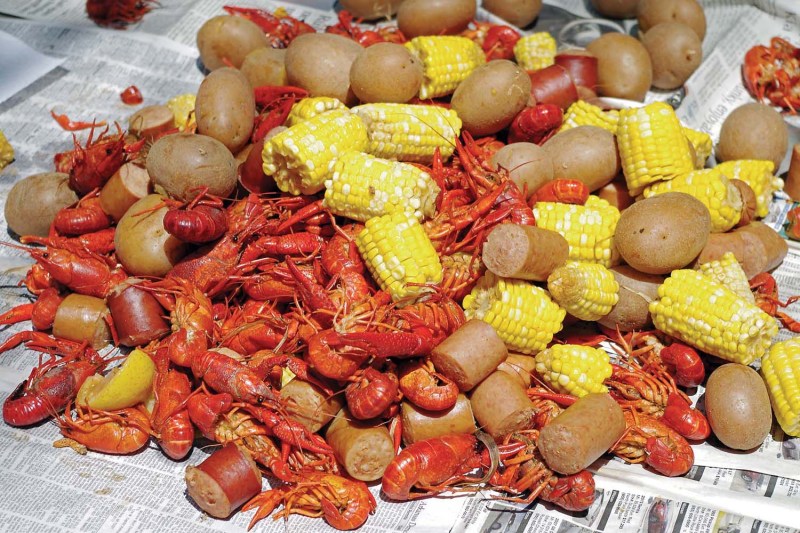
There’s a lot of debate among self-proclaimed “crawfish experts” as to whether purging crawfish is a necessary step in the cooking process. Some say that purging the little mudbugs forces them to poop and vomit out (we know, gross) all the grit and grime in their system. Others who say that they’ve tried both cannot tell the difference in the crawfish’s taste.
One thing is for sure — purging crawfish does increase their risk of dying, so if you decide to take that step, you’ll want to boil them soon after. There are two main ways people purge crawfish. The first is that they simply soak the crawdads in oxygenated water for several hours. This means you need to have a continuous flow of water into the container or change the water frequently.
The second and more widely used method is to purge them with salt. First, you’ll submerge them in water in a cooler or large tub. Take a box of salt and stir it into the water for three or for minutes. This will make the crawfish “purge” all the nasty grit in their systems and help clean off dirt from their shells. After mixing, dump out the saltwater and rinse with fresh a couple of times. If you’re not immediately boiling them, put them back on ice.
If you choose not to purge your crawfish, you’ll at least want to rinse them off. Placing them in a container with a large surface area (a hard-plastic kiddie pool works great for this) and spraying them off with a hose is a great way to get them ready for boiling.
How long does it take to boil crawfish?
Just remember 15 and 15. The crawfish should boil for about 15 minutes and then rest in the warm water for another 15 minutes. Soaking beforehand is advised, usually for about 25 to 30 minutes. Don’t go much longer or your crawdads will lose their integrity and become mushy and waterlogged.
How do you eat crawfish?
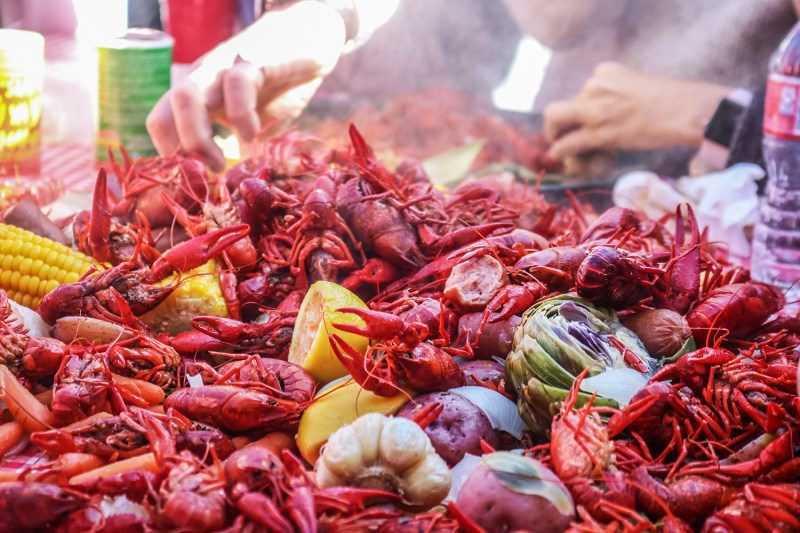
People have a lot of different methods to get to that tiny hunk of lobster-like meat. You may have heard about the “sucking the head” step to eating crawfish. It’s true. Some people do suck the head to get to the green, gooey brain stuff they claim to be delicious. This step is totally optional, and to be honest, it’s a step we like to skip.
Whether you decide to suck the head or not, the body must first be detached from the head, which is the crucial step in getting the meat from the tail. A tried-and-true method that we’ve used and other crawfish-eating pros attest to is the following:
- Take the head of the crawfish in one hand and the tail in the other.
- Straighten the tail so, a straight line forms from the tip of the crawfish’s nose to its tail.
- Push the tail into the head to break the connection.
- Turn ninety degrees either clockwise or counterclockwise.
- Pull the tail out, and the meat should remain intact.
- Suck meat out of tail.
- Repeat.
History and fun facts about crawfish
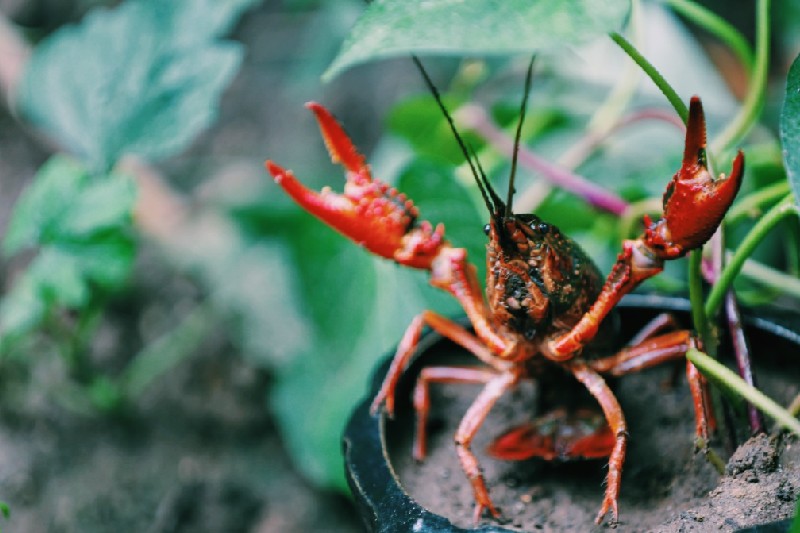
As we mentioned before, most crawfish come from Louisiana. Crayfish harvesting became common in the late 1800s. Now, the Bayou state produces 120-150 million pounds annually, and it contributes around 300 million dollars a year to the state’s economy. That’s a lot of yabbies. In fact, the state depends so much on crawdads, in fact, that over 7,000 jobs are dependent on the industry. Louisiana produces so many crawdads that the land can’t keep up. The natural vegetation is no longer able to sustain the demand, so farmers must now plant rice to feed the little buggers. Currently, only around 12% of crayfish are wild-caught.
As far as eating crawfish goes, they’re a great source of protein, calcium, phosphorous, iron, and B vitamins. They have a flavor very similar to lobster. A pound of crawfish meat only contains around 325 calories. Crawfish grow by molting and can shed their shells up to 15 times in their lifetime, each time growing to almost twice their previous size. So, if you come across an extra-large daddy, know he lived a long life.
Where exactly in Louisiana do crawfish come from?
Crawfish in Louisiana comes from two main sources: natural habitats and farms. Louisiana has an abundance of slow-moving waterways like bayous, swamps, and marshes that provide ideal breeding grounds for crawfish. People will trap or net wild crawfish from these areas. The Atchafalaya Basin, in particular, is famous for its crawfish production. Most notable is that crawfish farming is a significant industry in Louisiana. Farmers create ponds and cultivate crawfish in a controlled environment, which allows for larger and more consistent harvests throughout the season.


